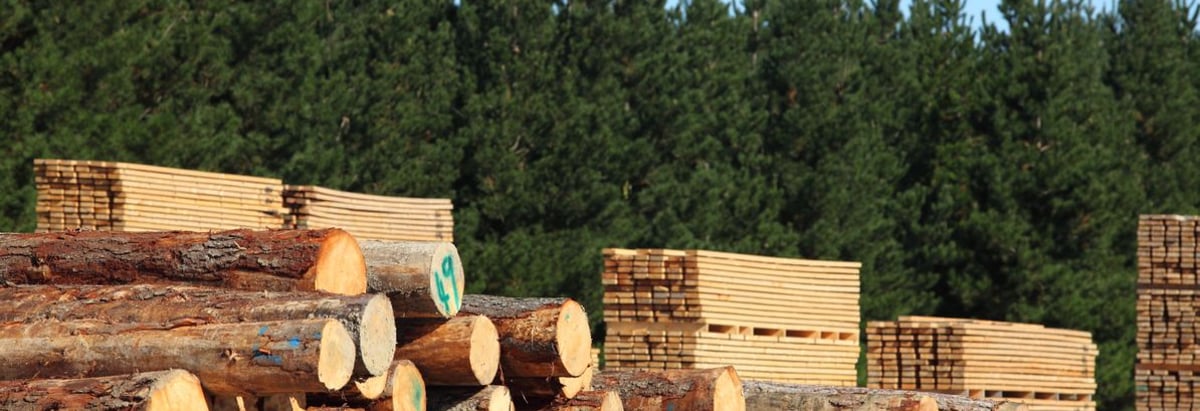- Canada
- /
- Paper and Forestry Products
- /
- TSX:WFG
We Think West Fraser Timber (TSE:WFG) Can Stay On Top Of Its Debt

Legendary fund manager Li Lu (who Charlie Munger backed) once said, 'The biggest investment risk is not the volatility of prices, but whether you will suffer a permanent loss of capital.' So it might be obvious that you need to consider debt, when you think about how risky any given stock is, because too much debt can sink a company. We can see that West Fraser Timber Co. Ltd. (TSE:WFG) does use debt in its business. But the real question is whether this debt is making the company risky.
When Is Debt Dangerous?
Debt assists a business until the business has trouble paying it off, either with new capital or with free cash flow. Part and parcel of capitalism is the process of 'creative destruction' where failed businesses are mercilessly liquidated by their bankers. While that is not too common, we often do see indebted companies permanently diluting shareholders because lenders force them to raise capital at a distressed price. Of course, the upside of debt is that it often represents cheap capital, especially when it replaces dilution in a company with the ability to reinvest at high rates of return. The first thing to do when considering how much debt a business uses is to look at its cash and debt together.
View our latest analysis for West Fraser Timber
What Is West Fraser Timber's Debt?
The image below, which you can click on for greater detail, shows that at March 2021 West Fraser Timber had debt of US$1.21b, up from US$989.1m in one year. But on the other hand it also has US$1.40b in cash, leading to a US$187.4m net cash position.

A Look At West Fraser Timber's Liabilities
Zooming in on the latest balance sheet data, we can see that West Fraser Timber had liabilities of US$1.45b due within 12 months and liabilities of US$1.91b due beyond that. On the other hand, it had cash of US$1.40b and US$679.0m worth of receivables due within a year. So its liabilities total US$1.28b more than the combination of its cash and short-term receivables.
Since publicly traded West Fraser Timber shares are worth a total of US$9.13b, it seems unlikely that this level of liabilities would be a major threat. But there are sufficient liabilities that we would certainly recommend shareholders continue to monitor the balance sheet, going forward. While it does have liabilities worth noting, West Fraser Timber also has more cash than debt, so we're pretty confident it can manage its debt safely.
It was also good to see that despite losing money on the EBIT line last year, West Fraser Timber turned things around in the last 12 months, delivering and EBIT of US$1.8b. The balance sheet is clearly the area to focus on when you are analysing debt. But it is future earnings, more than anything, that will determine West Fraser Timber's ability to maintain a healthy balance sheet going forward. So if you're focused on the future you can check out this free report showing analyst profit forecasts.
Finally, a business needs free cash flow to pay off debt; accounting profits just don't cut it. While West Fraser Timber has net cash on its balance sheet, it's still worth taking a look at its ability to convert earnings before interest and tax (EBIT) to free cash flow, to help us understand how quickly it is building (or eroding) that cash balance. During the last year, West Fraser Timber produced sturdy free cash flow equating to 79% of its EBIT, about what we'd expect. This free cash flow puts the company in a good position to pay down debt, when appropriate.
Summing up
Although West Fraser Timber's balance sheet isn't particularly strong, due to the total liabilities, it is clearly positive to see that it has net cash of US$187.4m. And it impressed us with free cash flow of US$1.4b, being 79% of its EBIT. So is West Fraser Timber's debt a risk? It doesn't seem so to us. There's no doubt that we learn most about debt from the balance sheet. But ultimately, every company can contain risks that exist outside of the balance sheet. For instance, we've identified 2 warning signs for West Fraser Timber that you should be aware of.
At the end of the day, it's often better to focus on companies that are free from net debt. You can access our special list of such companies (all with a track record of profit growth). It's free.
If you're looking for stocks to buy, use the lowest-cost* platform that is rated #1 Overall by Barron’s, Interactive Brokers. Trade stocks, options, futures, forex, bonds and funds on 135 markets, all from a single integrated account. Promoted
Valuation is complex, but we're here to simplify it.
Discover if West Fraser Timber might be undervalued or overvalued with our detailed analysis, featuring fair value estimates, potential risks, dividends, insider trades, and its financial condition.
Access Free AnalysisThis article by Simply Wall St is general in nature. It does not constitute a recommendation to buy or sell any stock, and does not take account of your objectives, or your financial situation. We aim to bring you long-term focused analysis driven by fundamental data. Note that our analysis may not factor in the latest price-sensitive company announcements or qualitative material. Simply Wall St has no position in any stocks mentioned.
*Interactive Brokers Rated Lowest Cost Broker by StockBrokers.com Annual Online Review 2020
Have feedback on this article? Concerned about the content? Get in touch with us directly. Alternatively, email editorial-team (at) simplywallst.com.
About TSX:WFG
West Fraser Timber
A diversified wood products company, engages in manufacturing, selling, marketing, and distributing lumber, engineered wood products, pulp, newsprint, wood chips, and other residuals and renewable energy.
Flawless balance sheet and good value.
Similar Companies
Market Insights
Community Narratives



